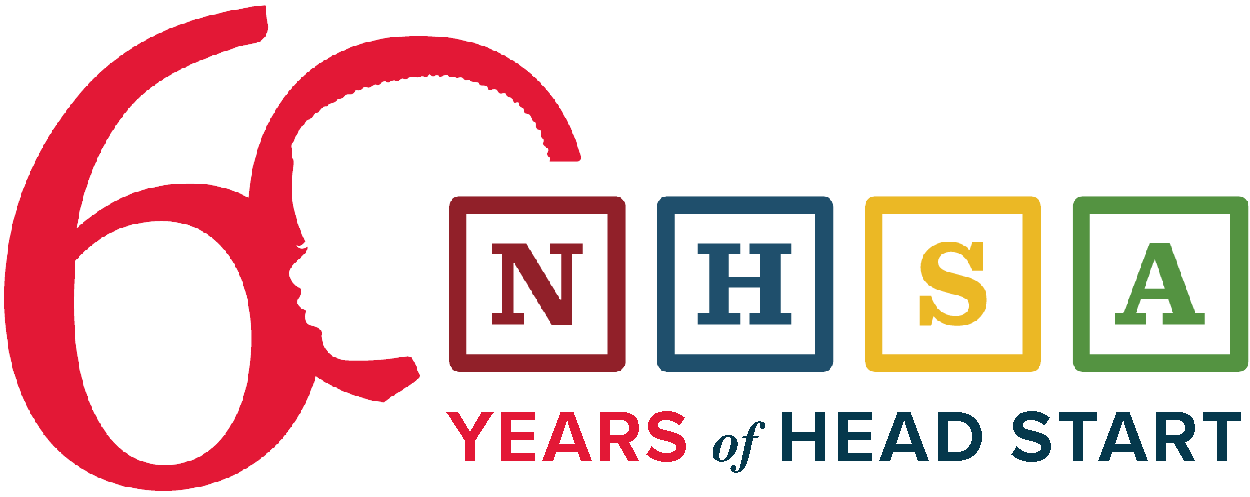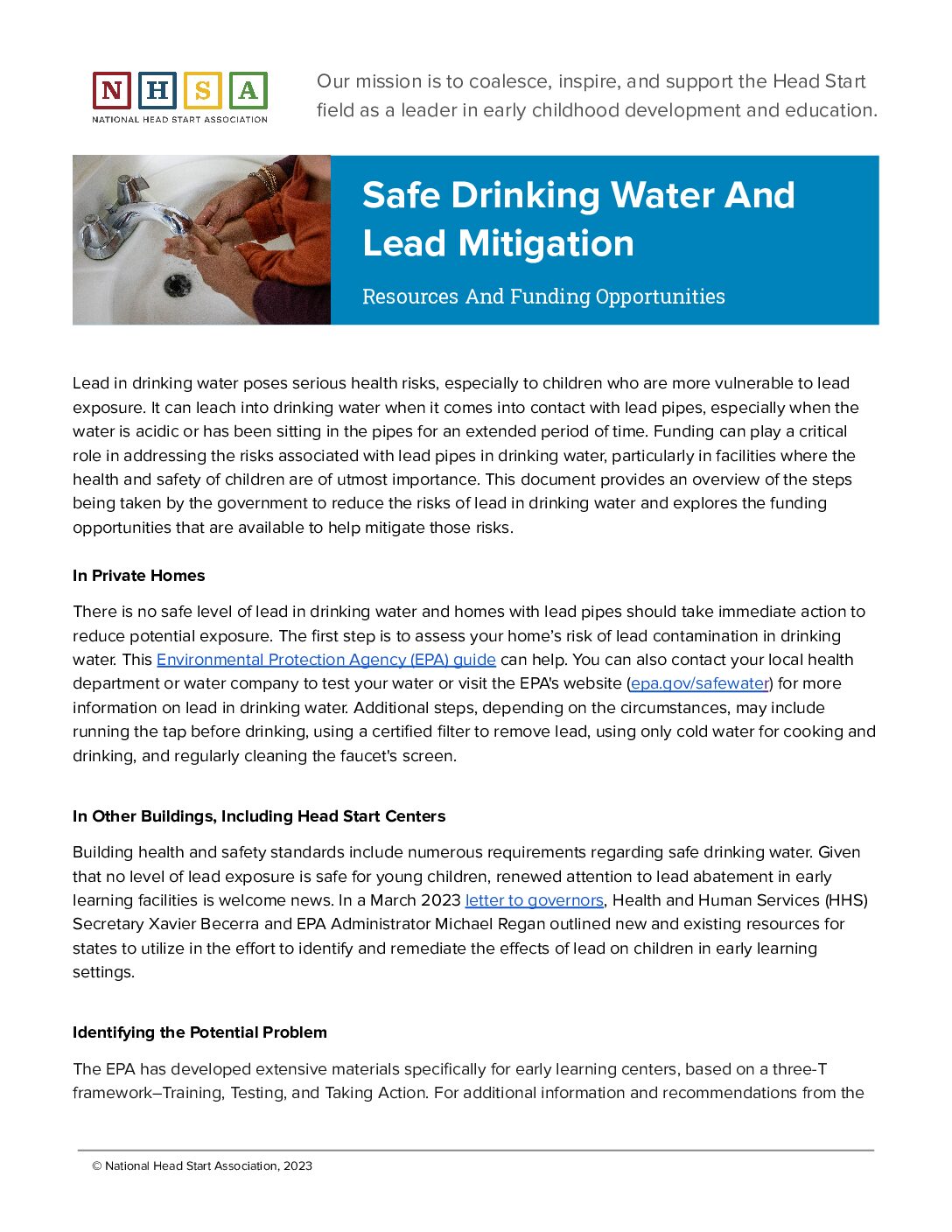Lead pipes used to supply drinking water can pose serious health risks, especially to vulnerable populations like children and pregnant women. Even low levels of lead exposure can have serious long-term health effects, including developmental delays, reduced IQ, and behavioral problems in children, as well as damage to the brain and nervous system. To reduce the risk of lead exposure from drinking water, it is important to identify and replace lead pipes in homes and other buildings, and to use a high-quality water filtration system to remove lead and other contaminants from drinking water.
There are many resources available to help individuals and Head Start programs assess potential risks of exposure to lead through drinking water and take corrective action steps. This resource includes funding options that may be accessible to help eliminate or replace lead pipes in your Head Start program.
Lead Exposure in Private Homes
There is no safe level of lead in drinking water and homes with lead pipes should take immediate action to reduce potential exposure. The first step is to assess your home’s risk of lead contamination in drinking water. This Environmental Protection Agency (EPA) guide can help. You can also contact your local health department or water company to test your water or visit the EPA’s website (epa.gov/safewater) for more information on lead in drinking water. Additional steps, depending on the circumstances, may include running the tap before drinking, using a certified filter to remove lead, using only cold water for cooking and drinking, and regularly cleaning the faucet’s screen.
Lead Exposure in Other Buildings, Including Head Start Centers
Building health and safety standards include numerous requirements regarding safe drinking water. Given that no level of lead exposure is safe for young children, renewed attention to lead abatement in early learning facilities is welcome news. In a March 2023 letter to governors, Health and Human Services (HHS) Secretary Xavier Becerra and EPA Administrator Michael Regan outlined new and existing resources for states to utilize in the effort to identify and remediate the effects of lead on children in early learning settings.
Identifying the Potential Problem
The EPA has developed extensive materials specifically for early learning centers, based on a three-T framework–Training, Testing, and Taking Action. For additional information and recommendations from the EPA to prepare schools, child care facilities, and states to build a voluntary implementation program and reduce lead levels in drinking water, see here. This includes information for testing water for lead.
Additionally, the administration launched the Get the Lead Out Partnership to accelerate the replacement of all of the nation’s lead service lines by the end of the decade. The initiative has over 100 initial partners, including cities, states, water utilities, and non-governmental organizations, who will share best practices and case studies on proactive lead removal.
New and Existing Resources to Help Get the Lead Out
The Bipartisan Infrastructure Law (BIL), passed in November 2021, includes new funding to help communities address the issue of lead pipes in drinking water. This funding will be distributed to states and territories based on need and will help communities identify and replace lead pipes in homes and buildings, upgrade water treatment facilities, and reduce the risk of lead exposure.
The EPA’s Voluntary School and Child Care Lead Testing and Reduction Grant Program (formerly called the Lead Testing in School and Child Care Program Drinking Water Grant) provides funding to help schools and child care programs test for lead in their drinking water. The BIL increased funding to approximately $200 million over five years for lead remediation and testing through this grant program, which is administered through states. (To find a list of the state agencies and EPA regional contacts under this grant visit this site.)
The BIL further authorized increased funding of $500 million over five years for the EPA Reducing Lead in Drinking Water Grant Program to fund water infrastructure improvements such as lead service line replacements and facility remediation at ECE settings.
Additional EPA drinking water resources support disadvantaged communities’ efforts to supply safe drinking water to their constituents. The BIL provides $15 billion through EPA’s Drinking Water State Revolving Fund (DWSRF) in the form of grants and loans to water systems for Lead Service Line Replacement (LSLR). Forty-nine percent of this funding must be provided to disadvantaged communities as grants or principal forgiveness loans—which can provide a pathway for underserved communities that might not otherwise have access to funding for water infrastructure upgrades. Water systems receive DWSRF assistance directly from state agencies.
At the start of 2023, the EPA announced the availability of two billion dollars from the BIL to address emerging contaminants–so-called “forever chemicals” in water. This investment will be made available to communities as grants through the EPA’s Emerging Contaminants in Small or Disadvantaged Communities (EC-SDC) Grant Program which seeks to promote access to safe and clean water in small, rural, and disadvantaged communities while supporting local economies. To learn more about this grant visit this page.
In July 2023, the administration announced an additional $58 million in grant funding to protect children from lead in drinking water at schools and child care facilities. Activities that remove sources of lead in drinking water are now eligible to receive funding through the Water Infrastructure Improvements for the Nation Act (WIIN).
Additional Resources
Grant Opportunities
- Funding Sources to Address Lead in Water – Administration for Children and Families
- Potential Funding Sources for Schools and Child Care Facilities – EPA
- Voluntary School and Child Care Lead Testing & Reduction Grant Program – EPA
Education
- Basic information about lead in drinking water – EPA
- Lead in drinking water – The Centers for Disease Control and Prevention
- Protect your tap: A quick check for lead – EPA
- Lead in Tap Water & Household Plumbing: Parent FAQs – Healthy Children
- Addressing lead in drinking water with the Drinking Water State Revolving Fund – EPA
- 3Ts for reducing lead in drinking water – EPA
Early Learning Facilities
- Child Care Facilities 3T’s Poster – EPA
- Sample Collection Guide for Child Care Facilities – EPA
- Testing water for Lead in Head Start Facilities – Early Childhood Learning and Knowledge Center
- Addressing Lead in ECE Settings – ACF
- Ensuring Drinking Water Quality in Child Care Facilities During and After Extended Closures – EPA

